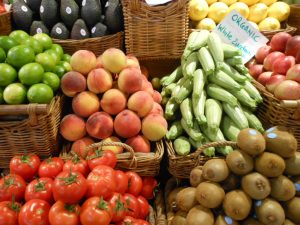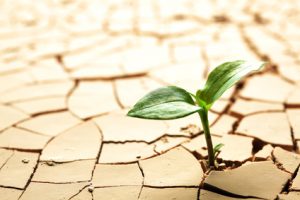Organic farming has become a huge player in the agriculture industry, and is often regarded as the ultimate health and environmental route. New insight brought to light by a research team at UBC may suggest that organic produce may not always be the best choice.

photo by Mike Coglhan via Flickr
Buying organic has become widely accepted as the healthy route for our produce needs. Organic produce is farmed without the use of synthetic pesticides or fertilizers. The word synthetic causes a lot of people to shy away, especially in regards to health. This allows farmers to be able to market organic at a higher price because of the belief that organic is better for you. Eating something covered in synthetic chemicals sure sounds like it couldn’t be good for you, but what actually are pesticides and how do they affect us? Chemical studies have determined that in actuality the exact same chemicals are naturally present inside the fruit/vegetable and up to 100 times the amount! It’s quite logical when you think about it, pesticides were first discovered from natural organisms own protection against insects and pests. Synthetic chemicals are really just the exact same compounds, but not coming directly from the natural source. This does not make synthetic pesticides good for you, but it means that other factors may be more important when comparing organic vs non-organic.
The biggest benefit of organic produce is it’s smaller environmental impact. Conventional farming is known to have a larger affect on the land and surrounding animals than organic farming. The issue with organic farming however, is that the crop yield can be up to 30% lower and will require more land to sustain food requirements leading to land clearing and degradation. The following video discussing the theory behind organic farming:
video by FuseSchool – Global Education via youtube
Brand knew research coming from the Institute for Resources, Environment and Sustainability at UBC this month looked at this issue in regards to how large a role organic farming should play. They found the main benefit of organic is it’s more controlled method, while the environmental benefits are mostly mediated by the lower crop yield. Overall the methods are very context dependent, and organic produce is not the ultimate technique in a sustainable future.
So should you buy organic? Sure, it is a completely regulated farming method that is more likely to be guaranteed quality. However, choosing to buy exclusively organic produce and support the elimination of conventional farming may serve to make produce less accessible to everyone due to it’s higher price tag. What is important is that we are eating lots of produce, and have industries that encourages people to do so. We should be supporting the improvement of both farming techniques to create the most efficient and safest way to meet our nutritional needs. At the end of it all, do we really want to live in a world where produce is more expensive than twinkies?


